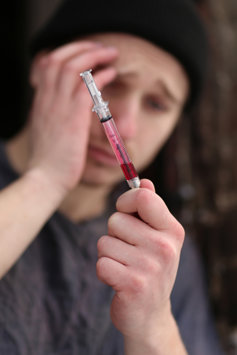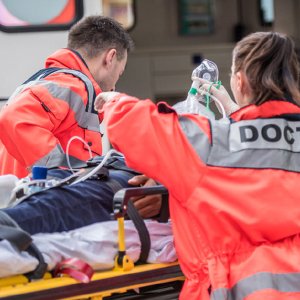What Can We Do to Reduce Drug Use in Our Communities?

While it is true that drug addiction can affect anyone, it is also true that drug use touches down in some communities more than it does in others. What makes certain areas of the U.S. different than others? What tends to almost protect some communities from rampant drug use, and what serves as the death knell for other communities? There are, in fact, unique factors about certain communities that make them more prone to having drug problems.
Underlying Issues That Can Provide a Springboard for Drug Use
Having seen thousands of people struggle with drug addiction and watching people from all backgrounds go through treatment, I will be the first to concede that drug addiction can affect anyone. No one is safe from the threat of this problem. Anyone can fall prey to drug use and drug addiction if certain conditions are present in their life that would inspire drug use.
But here’s the thing. Some people are more likely to experience the conditions that inspire drug use than others are. That is what makes some people (and by direct correlation to that) some communities more likely to fall prey to drug use.
Let’s look at some of the factors which might create a higher likelihood of drug use. If a person is living in poverty, that could easily be a factor. If the person is stuck in a low-income community, with poor education, sparse access to health facilities, reduced economic opportunity, and general misery, those could be factors as well.
We can see how, if a person is less likely to have an average quality of life, he is more likely to turn to drug use as a coping mechanism.
And it is not just my hypothesis on this. There is substantial research to back it up. Researchers from USA Today studied data from the Centers for Disease Control and Prevention analyzing drug overdose deaths on a county-to-county basis. In case after case, the counties with the highest drug-overdose rates in each state were also the counties in each state that had the most poverty, the highest unemployment, the most social isolation, the lowest educational attainment, the most miserable health conditions, etc.
“One of the biggest predictors of opiate addiction and substance abuse is poverty. In 42 of the 50 counties with the highest overdose rates in their states, the poverty rate is greater than
the 14.6% U.S. [average] figure.”

According to the USA Today article, “One of the biggest predictors of opiate addiction and substance abuse is poverty. In 42 of the 50 counties with the highest overdose rates in their states, the poverty rate is greater than the 14.6% U.S. [average] figure. Drug addiction and overdose are also linked with other serious public health issues America is facing today, such as obesity, physical inactivity, poor nutrition, and poor access to health care.”
The USA Today article then goes on to list the counties with the highest drug overdose death rates in all 50 states. Almost across the boards, these counties were also ones that had higher poverty rates than the national or state average.
For reference, let’s look at three states cited in the article:
- Indiana. Indiana’s top county for drug overdoses from 2013 to 2017 was Fayette County. The annual drug deaths per 100,000 population in that county were 61.4 while the state death rate was only 21.6 deaths per 100,000 population. Fayette County has a poverty rate of 18.2 percent. The state poverty rate for Indiana is 14.6 percent.
- Maryland. Baltimore City (also functioning as a county) had an annual drug-death rate of 61.6 deaths per 100,000 population from 2013 to 2017. The state death rate was 25.7 deaths per 100,000. The city poverty rate is 22.4 percent, compared to 9.7 percent for the state as a whole.
- Utah. Carbon County lost 54.5 people to drug overdoses every year for every 100,000 population. The state total was 21.8 deaths for every 100,000 people. Carbon County has a 16.2 percent poverty rate, in a state which has an 11 percent poverty rate overall.
Clearly, there is a connection between poverty and drug deaths.
Thinking Outside of the Box for Solutions to the Drug Problem
It’s time to start thinking outside of the box when it comes to addressing the drug problem. We know that residential drug addiction treatment is the answer to helping those who are actively addicted to drugs and alcohol. But how can we help improve our communities to prevent drug use from becoming a problem in those communities in the first place?
We know that getting educational programs into communities and raising awareness for drug issues is a great way to prevent people from using drugs. When people know the truth about drugs, they are less likely to use drugs—it’s as simple as that.
But what if we took this a step further and tried to correct the conditions in our communities that incite people to use drugs in the first place? Conceding that drug use is entirely a personal thing and can happen to anyone, what can we do in our communities to prevent the likelihood of residents turning to drugs?
I’m no economist, but efforts which boost economic activity in impoverished areas would be the first step towards reducing the likelihood of drug use within those communities. Companies should invest in impoverished American communities as an alternative to outsourcing labor elsewhere. Federal and state governments could also create work programs within impoverished counties to turn around the economic stagnation in those areas.
Another approach that comes to mind is to increase access to healthcare facilities within such communities. People have to have access to quality healthcare. Some federal and state programs now offer student loan repayment options to doctors in exchange for those doctors agreeing to work in rural, underserved areas for specific lengths of time. That is a brilliant idea and should be replicated all across the country.
Education is another approach that should be implemented, but not just education regarding the drug problem—we need overall educational improvements in impoverished counties. If young people cannot get a quality education, their odds for success, happiness, health, and stability in life are drastically reduced.
Drug prevention and rehabilitation only work if we help everyone get better. This problem only goes away if we help everyone who is afflicted by it. It’s a big task to address, that is true, but we cannot be selective about it. Either we all win, or none of us do.
Sources:
- https://www.usatoday.com/story/money/2019/08/02/opioid-crisis-counties-with-worst-drug-problems-in-every-state/39822385/
- https://www.ruralhealthinfo.org/rural-monitor/loan-repayment-and-forgiveness/
Reviewed by Claire Pinelli, ICAADC, CCS, LADC, MCAP, RAS


